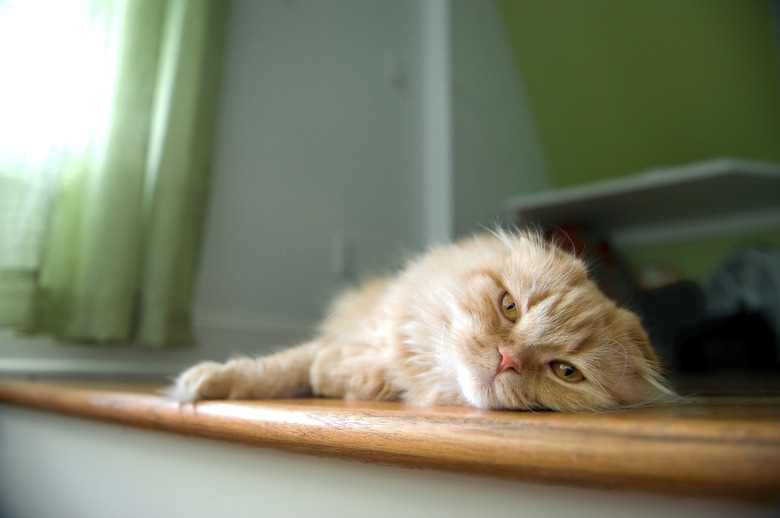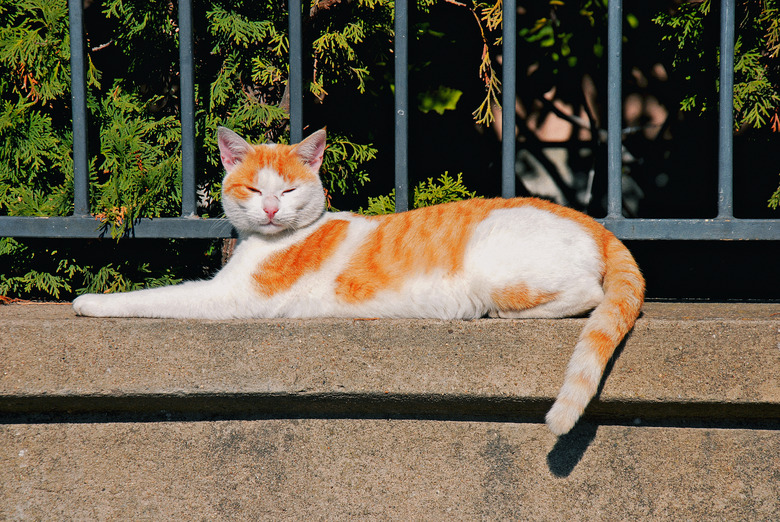Why Is My Cat Limping?
Cats may limp on one leg for many reasons: trauma, infection, abscess, fracture, muscle injury, tendon or ligament injury, foreign body, toenail injury, nerve injury, or osteoarthritis. A cat walking in a strange way needs to be assessed by a veterinarian, but there are some things pet owners can do to provide some immediate first aid and diagnostic help before a veterinary appointment. For instance, a pet parent can watch their cat's movements to determine the affected leg as well as signs of pain and lameness. It is also helpful if you know what the cat was doing when the injury occurred. This will help the veterinarian determine possible causes.
What should I do if my cat is limping?
What should I do if my cat is limping?
A limping cat should be seen by a veterinarian as soon as possible. If your cat is obviously in pain, don't attempt to examine them. This can lead to your own injury since any creature in pain can bite or scratch. Do not attempt to manipulate an injured limb since that can lead to greater injury.
If your cat allows you to handle them, you may be able to examine them to obtain information on the cause of the limp. Have your kitty lie down and look at the affected limb, starting from the cat's paw and working your way up their leg to the torso. Gently look for sensitive areas by rubbing your hand lightly over the paws, between the toes, and up the leg. Your cat will likely wince or pull back from you when you find the affected area.
If there is an obvious problem like dangling limbs, your feline friend likely has a broken leg or a dislocation. They will need to be taken to a veterinary hospital for obvious problems like that or for an obvious open wound.
Common causes of cat limping
Common causes of cat limping
Cats are mobile slinkers, adept jumpers, and masters of getting into tight spaces. These tendencies can lead to mysterious injuries out of the sight of their pet parents. There are several common causes of limping.
Foreign objects
If you are unable to determine a visible cause or remove the foreign object, take your cat to a veterinarian. However, if the foreign object is easy to reach, you may be able to remove it with a pair of tweezers. For instance, a common reason for a limp could be found on the paw pad or between the toes, where a sticker or bee stinger can lodge. Watch the area for signs of infection, including swelling, hot skin at the site of the foreign object removal, blood, or pus. If the paw looks infected, take your cat to your veterinarian for treatment.Do not wait to see a veterinarian if there is a deep puncture wound caused by a foreign object, since this is high risk for infection and complications.
Torn or broken toenails
Cats sharpen their claws on objects to remove the outer nail sheaths and reveal the smooth, sharp claws underneath them. A cat who suffers from a torn or broken toenail may limp. If your cat has a lateral tear from the tip of the claw extending upward or a break in a toenail that could cause your cat to bleed, apply styptic powder to stop the bleeding (corn starch can substitute in a pinch) and take your cat to your veterinarian.
Severe tears and short breaks require your cat to be sedated and your veterinarian to trim the nail higher than the affected area. Your cat will most likely travel home with a cute new bandage on their foot and possibly pain medication or antibiotics to prevent infection.
Soft tissue trauma
Sprains, strains, and pulled muscles occur in cats from jarring the soft tissue. These injuries are all evident in a limping cat. When a cat is limping and in obvious pain, fracture must be ruled out. Take your cat to the veterinarian, who will perform X-rays to make sure no bones are broken. If there are no fractures, warm compresses and rest can heal these injuries, with complete recovery in about two weeks. If the limp continues and does not vanish or diminish during this time, seek additional veterinary help.
Severe limping
If you cat has a severe limp, cannot bear weight on a foot, or exhibits distress and pain, seek immediate veterinary care. These can be signs of a broken bone, torn ligaments, or dislocated joints that require medical care.
Should I take my limping cat to the vet?
Should I take my limping cat to the vet?
In almost every case, if your cat is limping, you should seek help from a veterinarian. First, it's important to rule out fractures that need more intensive treatment. Manipulating a cat's leg can also further injure the cat. Even calm, people-friendly cats can lash out with their claws or teeth when in pain, so it's best to leave the examination and diagnosis to your veterinary team.
The bottom line
The bottom line
A cat can be limping for many reasons, and each of those different injuries, from soft tissue trauma to broken toenails, requires a different kind of care. If you notice your cat limping, take note of when the injury occurred and which leg they are limping on and take your cat to your DVM for a proper diagnosis as soon as possible. A professional will be able to examine your cat safely and determine the best treatment.


